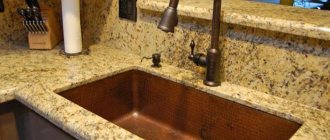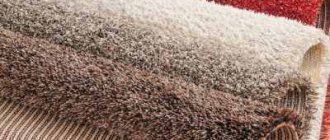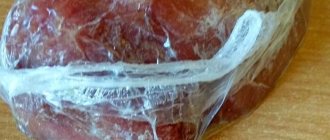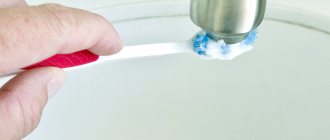It’s real to defeat white sediment in water – 5 proven ways
19.09.2017
It’s real to defeat white sediment in water – 5 proven ways
White sediment appears in water due to the high content of iron, magnesium, calcium salts in it, in other words, hardness salts. Scale in devices for heating water (for example, in a kettle), film on the surface of tea, white flakes - all these are indicators of excessively hard water. Unfortunately, the use of such liquid in the household entails many unpleasant consequences.
From this article you will learn:
- Why does white sediment appear in water?
- Is white sediment in water harmful?
- How to prepare water for laboratory testing
- How does white sediment in water affect household appliances, clothing, plants?
- What is the easiest way to remove white sediment from water?
- What to do if the water has a white sediment after boiling?
- How to reliably remove white sediment from water
Is white sediment in water harmful?
So why does white sediment appear in the water? Hard water is a liquid with a high proportion of calcium and magnesium salts, which form such scale. Enrichment of the liquid occurs while it is underground. If there is a lot of these substances in a certain area, the water will be hard; if there is little, the water will be soft.
In addition, water hardness is divided into permanent and temporary. This indicator depends on the type of salts. The second option is associated with the presence of water-soluble salts in water. They disintegrate when the liquid is heated - when a kettle or washing machine is used, a white precipitate forms in the water. It is clearly visible to the naked eye and after a certain time becomes the cause of breakdown of household appliances.
If there are insoluble salts in the liquid, the hardness is considered constant. This situation is much more dangerous than the one we discussed above. The reason is that when water is boiled, the salts do not evaporate, but create a layer on all surfaces, including the skin and internal organs, causing illness.
If we turn to chemistry, water hardness is a set of physical processes in water associated with the content of dissolved salts of alkaline earth metals, mostly calcium and magnesium. Aluminum and ferric iron (Fe3+) are also capable of changing the indicator we are discussing. However, it is important to understand that the pH levels found in natural water do not allow them to greatly affect the condition of the water. For the same reason, no one takes into account barium (Ba2+), which has little effect on the quality of this liquid.
Articles recommended for reading:
- Types of water filters and their characteristics
- How to install a water filter - useful tips
- How to drink water correctly: practical recommendations
Hardness is practically the main indicator in determining the suitability of water for use in industry and at home. The appearance of a white sediment in water after boiling is associated precisely with this standard.
It is calculated by the number of millimoles of calcium and magnesium ions per liter of water (mmol/l). 1 mmol/L is the molecular weight of any substance in mg/L divided by its valency. 1 mmol/l means that a liter of water contains 20.04 mg/l calcium or 12.10 mg/l magnesium. To make it easier, it is customary to use the value mEq/L, which is equal to mol/m3. In addition, hardness units such as German degrees (dH), French degrees (TH), and American degrees (ppm) are used abroad.
Now let’s take a closer look at the types of water hardness that we have already mentioned above:
- Temporary – carbonate hardness, is associated with the presence in water (at pH>8.3) of calcium and magnesium bicarbonates – Ca(HCO3)2, Mg(HCO3)2. If we increase the temperature of such water, unstable bicarbonates turn into an insoluble form, that is, carbonates CaCO3↓ and MgCO3↓ are formed, while carbonic acid is released, and a white precipitate is formed in boiled water, in other words, scale, boiler stone. This type of hardness can be almost completely eliminated by boiling water, which is why it is called temporary.
- Constant - non-carbonate hardness, is associated with the content of sulfate, nitrate, chloride anions. Their calcium and magnesium salts (CaCl2, CaSO4, MgCl2, MgSO4) cannot be removed by boiling.
- Total – the total value of the presence of magnesium and calcium salts in water, in other words, carbonate and non-carbonate hardness combined.
Based on the number of named salts, water hardness is classified according to the following gradation:
- soft water – hardness 3 mEq/l or more;
- average hardness – from 3 to 6 mEq/l;
- hard water – over 6 mEq/ml.
It is obvious that hard water has a serious impact on our health. Namely:
- First of all, poor water quality affects the skin. The pores become clogged, the natural fatty film designed to protect the skin disappears, dryness, irritation, dermatitis, rashes, etc. appear.
- The condition of the hair and scalp worsens due to those substances that form a white sediment in the water. In the same way, dryness, itching, dandruff appears, the hair becomes stiff, unruly and even after washing it does not seem tidy enough.
- However, the key is that insoluble salts tend to accumulate in the body, which leads to the formation of kidney stones and blockage of blood vessels. Thus, long-term use of hard water has irreparable effects on health!
True, one cannot say that everything is so clear. It is important to understand that the acceptability of drinking water hardness may vary depending on specific local conditions. The taste threshold for calcium ions is in the range of 2–6 mEq/L, influenced by the amount of the corresponding anion, while this value for magnesium is much lower (in some situations, water with a hardness of 10 mEq/L is acceptable). Hard water has a bitter taste, has a negative effect on the digestive organs, and the organoleptic properties of water leave much to be desired.
If you see a white precipitate when boiling water, know that such a liquid cannot be useful to the same extent as a soft one. Soft water has a very large number of advantages compared to hard water. This applies both to everyday needs and to the quality of life of people in general:
- the reduction in costs for detergents will be approximately 30–50%, since soap, powders and other products produce excellent foam in soft water;
- the absence of malfunctions of household appliances, plumbing, even clothing will also free you from spending serious money;
- improving the quality of food and drinks;
- improving the appearance of skin and hair;
- no threat of urolithiasis, as well as other diseases of internal organs, which is perhaps the most important.
It turns out that using soft water can directly affect cost reduction, as well as bring comfort and ease into your life. Remember: hard water and white sediment in the water can and should be dealt with, and the sooner you can devote your time to this issue, the better.
Read material on the topic: Drinking water safety: control and standards
Solutions
The cleaning method is usually proportional to the type of contamination to be removed. So, to get rid of water hardness and reduce the level of, for example, strontium in it, a different approach will be required. Removing the white tint is solved: a) by cleaning the accumulated sediment by blowing (cleaning) the water heater; b) after the accumulation of a certain amount of sludge; c) purification by reverse osmosis filtration to the state of potable moisture; d) gas removal using aeration with degassing.
Of course, of the huge number of inclusions dissolved in a liquid, only a few of them can be identified visually. And if the water, after settling, leaves a sediment of white suspension at the bottom, this will be evidence of the proximity of the source to limestone and calcium salts.
Filtration and purification are carried out competently if qualified specialists who are proficient in this subject are involved in the process, and not amateurs.
byrim.com
Why does white sediment appear in boiled water?
- Due to the hardness of tap water and all sorts of impurities, when it is boiled, a white precipitate and scale form. It can very often be seen in the kettle at the bottom and scale on the walls. Tap water must be filtered, then the sediment problem will disappear
- It even happens that water was collected from the tap, then filtered, and then boiled, but there is still a white precipitate. The fact is that different filters (especially the simplest jugs) clean from different compounds (in general, almost all, but each impurity is removed to a greater or lesser extent).
If sediment remains, it means that the filter softened the water, but did not completely remove salts, calcium and magnesium .
Boiling alone does not get rid of harmful impurities at all, but only kills bacteria.
- Our tap water is of such good quality, and even filtration does not always help, white nalt is scale that forms as a result of heating water, sometimes it is bleach, which is still used to purify our water, although this method of purification has long been used in the whole world prohibited
- I think that the water you use contains a lot of trace elements and iron, which give a white precipitate when boiled. It is very good to have a water filter at home and clean the kettle more often so that scale does not accumulate on its walls and bottom.
- When boiled in water, lime and other minerals and chemical elements crystallize and settle on the walls and bottom of the kettle. To clean the kettle, you need to pour a little vinegar into the kettle with water and boil it, then rinse the kettle with clean water.
- Running water from a tap has increased hardness due to the presence of various impurities and even just rust and other things from old pipes. Even after filtering with a pitcher, flow-through or other conventional apartment filter and subsequent boiling, some scale remains.
- Boiling is the process of heating water to the point of steam formation (100 degrees), during which the process of forming steam bubbles occurs due to the fact that as the temperature increases, the steam pressure increases and they float up. During the boiling process, a sediment is formed, which includes dirt particles, heavy elements and beneficial salts of calcium and magnesium.
- This is a type of scale, it’s just that the poorer the quality of the water, the more sediment it leaves, and it can come in all sorts of flakes and sand and even green deposits, so you should first pass the tap water through a filter, and only then boil it and eat it.
- Even filtered boiled water can produce sediment, and this is quite normal, it depends on the hardness of the water; the harder the water, the more sediment there will be. When boiling water, magnesium and calcium bicarbonates are destroyed, turning into carbonates. And these carbonates do absolutely no harm to human health.
- If a white precipitate appears in your boiled water, it means your water is hard, and this is the same scale, various suspensions and minerals. We don’t have this, but our water is very soft, but when I went on vacation to a sanatorium, the water there was bad, and such phenomena were noticed in it after boiling. I had to drink water from the cooler.
info-4all.ru
Perhaps everyone knows that scale needs to be removed from the walls of a kettle. But few people suspect that this sediment is only the visible part of the “iceberg.” Scale is not as scary, experts say, as its cause is hard water and the harmful elements that it carries that do not precipitate in the form of scale.
Scale is the deposition of mineral salts contained in water after it is heated or boiled. Any housewife will be happy to share a lot of ways to get rid of this white coating, but we hardly think: why and what exactly is so dangerous about the resulting sediment? Experts say that scale is just an indicator and a consequence of a high degree of water hardness. The scale itself is quite easy to remove using modern means or “grandmother’s” methods. but you need to fight not with the effect, but with its cause.
It is known that the degree of water hardness is determined by the level of mineral salts in it, which are commonly called hardness salts. Science divides water hardness into temporary and permanent. Temporary is determined by calcium and magnesium salts, which, when boiled, precipitate, that is, they form scale. The level of permanent hardness depends on the concentration of calcium and magnesium salts that remain in the water even after boiling, for example, calcium sulfate or calcium chloride. It is salts of constant hardness that, under certain conditions, precipitate in the human body and form real scale in it, which is not as easy to get rid of as “flakes” on the walls of a kettle.
At the same time, such salts can be deposited in almost any organ - from the gallbladder to the joints. Considering that we use water in one way or another to prepare most foods and dishes, the benefits of hard water for the body are, to put it mildly, questionable.
Scientists, however, are in no hurry to blame water distribution organizations for all the troubles. The existing standards for water hardness in Russia are the same for all regions. But, according to experts, the actual degree of hardness depends solely on the natural conditions of water mineralization in a particular area. That is why the standards allow double - minimum and maximum - indicators of hardness and iron content in water in case of their increase. Moreover, artificially reducing the level of rigidity leads to rapid corrosion of pipes. At the same time, soft water contains more iron and those metals that are washed out of the pipes themselves and enter our household taps with water, and from there into the body. Reducing water hardness at the level of distribution networks is also economically unprofitable and unjustified, and not only in Russia, but throughout the world. It is estimated, for example, that of the 300-400 liters of water that we use daily, 99 percent is used for domestic needs. Economists and scientists agree on one thing: the task of water distribution organizations is to provide us with bacteriologically and toxicologically safe water.
But the average consumer has to think about how to get truly high-quality water from this safe water and thereby take care of their health.
This is where household water filters come to the rescue. Modern Russian technologies in this area, by the way, have long been superior to Western ones. A standard household filter, such as Aquaphor Crystal, not only removes suspended matter, chlorine, heavy metals and other harmful impurities from water, but also gets rid of deadly scale. Manufacturers have also been producing special filter models for hard water for a long time. But in most regions of our country the water is still hard.
www.goagetaway.com
AP expert - about research of Amur water and available methods for its purification
05/01/2015, 06:14Health
— Valentina Alexandrovna, you know everything about our water! How do you assess the quality of bottled water that is delivered to our homes in 19-liter bottles?
— If the water is taken from artesian sources and meets the requirements of drinking water supply, then it is of the best quality. Drinking water comes in different categories, the highest is from natural sources. It meets all standards and can be consumed raw. After all, it undergoes special training before bottling. In terms of chemical composition, this water is the most balanced. We tested the water from our local producers many times - in principle, it all met the requirements.
But when you buy water, be sure to look at what source it comes from. For example, the highest category includes water taken only from underground wells. You can bring tap water to a certain standard, but it will still be superficial.
- How is she worse?
“Such water collects industrial and agricultural waste from the surface of the earth and passes through the information fields of the planet, which negatively affects its quality. Water from a well and especially artesian water is in any case better than river water.
— What kind of water flows from the taps of residents of the regional center?
— The Amur water intake takes water from the river. Of course, it is cleaned and brought to a certain condition, but no matter how hard they try, it still has a certain taste and smell - this indicates the imperfection of cleaning technologies. The northern water intake takes under-channel water from the Zeya River. This is underground water, but not artesian. Our tap water does not fully meet all drinking water quality requirements. People feel it organoleptically. As they say in common parlance, water is not very tasty.
— I read on one of the websites that “the content of iron in tap water in the Amur region is up to a hundred times higher than the permissible concentrations” (MPC), is this really true?
— There is definitely no such thing in the city water supply network. But in many wells that residents of the private sector drill for personal consumption, the iron content in the water can indeed be very high - tens and even hundreds of times higher than the maximum permissible concentration.
- Can this be visually determined?
- Yes. When standing in air, such water gives a characteristic yellowish sediment, and an iridescent film appears on the surface of the water. If these signs are absent, but a brown coating remains on the walls of the kettle after boiling, it means that the maximum permissible concentration for iron is exceeded, but not by much.
Another problem for the Amur region is that we have a lot of calcium and magnesium ions in groundwater. These are salts that determine water hardness. It doesn't lather well, and after washing, a flaky residue forms on the walls of the basin. There are definitely no health benefits from such water. Such water can only be used for technical needs, and for drinking it must be purified.
— Many people notice that water from bottles leaves white flakes after boiling. What could this mean?
— Boiling is one of the ways to eliminate temporary hardness, that is, when boiling, calcium and magnesium carbonates are formed. Visually, the water becomes cloudy and a light white sediment appears. This is where excess calcium salts settle to the bottom. There's nothing wrong with that. But boiling by itself does not improve water quality. If, for example, you boil tap water that contains residual chlorine, chlorine-containing organic compounds are formed - a powerful carcinogen. Boiling unsettled tap water, especially repeatedly, is very harmful!
“I used to draw water from a consecrated spring in the Belogorye area, but then I stopped - the bottle began to become covered with a green coating.
— Natural water cannot be stored in the light. The water we buy is specially treated - it is ozonated to kill all living microorganisms. Otherwise it will turn green in the light. This suggests that there are simple algae in the water, and they begin to develop in the light. Their waste products worsen water quality, especially if the algae are from the blue-green family. Therefore, when you make a large supply of natural water, store it only in a dark place.
METHODS OF WATER PURIFICATION AT HOME
Filters
— Nowadays, pitcher-type filters are widespread, where the cartridge is selected depending on the quality of the water. As a rule, there are three types: some purposefully reduce water hardness, others - iron content. For residents of Blagoveshchensk, I would recommend universal ones. The water in our network is moderately soft - there are no excesses of the maximum permissible concentration for calcium and magnesium salts. But remember: filters have certain terms of use, the manufacturer indicates them. Change cartridges or cassettes regularly. Over time, microorganisms begin to develop on them, and the waste products of these microorganisms can be quite harmful. Then, in addition to chemical pollution, biological pollution will also be added. Drinking such water is even more harmful than drinking tap water.
Advocacy
— Water settling reduces the amount of free chlorine in tap water. One test for water toxicity is using daphnia or juvenile trout. They pour water, put the fry in there and see whether they survive or not. The individual amounts of each chemical element in tap water may be harmless, but exposure to several of these elements together can have a toxic effect. Even if chemists say that the water is clean: the maximum concentration limit is not exceeded for either one, or the second, third or tenth component, we put a small fish in there - and it dies. This means that in general the water is toxic—the living organism dies. In combination, all these elements give such a negative effect. Therefore, tap water must be defended - then it becomes biologically active, capable of supporting life.
MINERALS OR COALS?
“Sometimes people put minerals in carafes of filtered water, hoping that the quality of the water will improve. Indeed, some minerals have ion-exchange properties - they take some ions from the water and release others. For example, ions of iron, manganese, calcium, magnesium are replaced by potassium and sodium ions that are more harmless to humans. Ziolite and shungite have these properties and improve the composition of water. Silicon water does not have ion-exchange properties, but gives a slight bactericidal effect.
There is another popular method of water purification - birch coals. This is, in fact, the same activated carbon that is used as one of the stages of water purification in filters. It absorbs organic substances well. But I would like to warn people against this type of cleaning. In production, activated carbon is produced by burning wood in a special way - without access to air. The coals must burn well, otherwise you can get poisoned - resins from wood that are not completely burned out are very toxic.
MAGNET IMPROVES WATER PROPERTIES
— Household filters purify water from harmful impurities and bacteria, but cannot return its beneficial natural qualities. I am often asked how I feel about magnetizing water? Can this method really erase negative information and fill purified water with vital energy? The magnetic field that affects water changes its physical and chemical properties. There is scientific confirmation of this. The water becomes more structured than ordinary water. It increases the rate of chemical reactions and crystallization of dissolved substances. For example, hard magnetized water does not form sediment on the walls of steam boilers - this does not slow down its thermal conductivity, because scale does not form. Boiler houses have long used patented devices for magnetizing water. There are also special magnets that are inserted into the filters of drinking water purification systems for a healing effect. Of all the technologies for “vitalizing” water, the magnetization method is considered the most scientifically based. However, the “memory” of magnetized water is short-lived - up to two days.
- Irina Voroshilova
- Amurskaya Pravda from 04/24/2015
ampravda.ru
How does white sediment in water affect household appliances, clothing, plants?
There are a number of areas in our lives for which rigidity is, in principle, unimportant. So, any water can be used to water lawns and put out fires. However, water hardness becomes a scourge not only when preparing food and drinking, but also in everyday life: when doing laundry, washing dishes, etc. Household appliances (washing machines, dishwashers, etc.), autonomous hot water supply and heating systems are afraid of increased water hardness. This means that the fight against it is urgent. After boiling water, hardness salts form a white precipitate that is familiar to everyone. This scale reduces the operating life of plumbing fixtures, household appliances, heating boilers, and pipes.
How does water hardness affect household processes? In this case, there is an overconsumption of detergents when washing clothes, washing by 30–50%. Low consumer characteristics of water are also noted: when preparing coffee or tea, a brown sediment may appear in such liquid. Or while it is boiling, a film forms on the surface, and the water acquires a specific taste.
It is worth talking in more detail about the effect of water hardness on the results of washing and washing. The danger is that hardness salts together with detergents (soap, shampoo, washing powder) form “soap slag” that looks like foam. When dry, they create a thin layer on the skin and hair, causing serious harm to their health. As a result, dry skin, brittle hair, flaking, itching, dandruff. One of the harbingers of such a negative effect is the characteristic “creaking” of washed skin and hair. Special creams and masks allow you to restore the lost fat film. But the “slipperiness” felt after washing with soft water is a guarantee of maintaining a protective fatty film.
All over the world, cosmetology specialists choose soft water for washing. Since hard water dries the skin when washing and does not allow the soap to foam to the required extent. Hard water, as we said, gives a white precipitate when boiled, but the same coating forms on the walls of boilers, in pipes, etc. True, preference for excessively soft water is not a solution. The fact is that it can cause corrosion, since it does not have such an important property as the acid-base buffering provided by hydrocarbonate (temporary) hardness.
The main factors of the appearance
Sediment in water after boiling has several forms. Most often found:
• suspension at the bottom; • film on the surface; • limescale on the walls.
The main reason for their appearance is hardness salts. The formation is promoted by an increased concentration of salts of two substances - calcium and magnesium. They penetrate the liquid as they move through different layers of soil. A large number of salts make it hard.
It is worth noting that if there is dirt, dirty foam will form during boiling. Sedimentation in water after boiling is often associated with mechanical impurities. Sometimes they appear due to the use of dirty salt.
What is the easiest way to remove white sediment from water?
The most inexpensive and easiest option for dealing with white sediment in water, for example, from a well, is boiling. At +100 °C, all hardness salts appear in the form of a white precipitate. It is easy to notice on the walls of pots and kettles. This kind of plaque is called scale. Boiling seems to soften the water, but then it is not so easy to restore the damaged dishes. Let us suggest a solution: if you want to return the kettle to its previous appearance, boil water for some time with the addition of citric acid or vinegar - an acidic environment will deal with the problem well.
Read the material on the topic: Is it possible to drink tap water?
Why does plaque form on the bottom and walls of dishes?
The content of all necessary microelements in artesian water (such as Protera) is determined by nature itself and is under the constant control of specialists. If you keep it in a glass or ceramic container for a long time, the bicarbonates will indeed precipitate in the form of a harmless white precipitate. If you boil it, scale will appear inside the kettle. But all this is good.
The white coating that remains on the bottom and walls of dishes is very annoying for housewives. If you leave water in a dish for a long time, a deposit will form along the edge - at the level of the gradually evaporating water. It sometimes appears on teapots, aquariums and even in swimming pools.
What to do if the water has a white sediment after boiling?
The preference for a specific softening water treatment technology should be given based on whether you want to solve this problem locally or on a large scale:
- If you only need soft drinking water, the filter jug we are all familiar with is quite sufficient. True, your home appliances will still work with water of increased hardness.
- Once you decide to take care of the long-term performance of household appliances, a good solution would be to buy special tablets or powders that soften water. This is an excellent option for dishwashers and washing machines, which, however, is completely unsuitable for treating drinking water if a white precipitate forms when the water is boiled.
- But let’s say you still approach the issue globally. Then we recommend that you think about installing reverse osmosis filters. They will soften all the water that comes to you from the taps, and you will not have to worry about your health or the condition of your appliances.
Filters for cleaning
You can get rid of dissolved magnesium and calcium salts using good filters. Reverse osmosis systems, coal systems, etc. fully cope with the task.
Mechanical filter
It implies two degrees of cleaning - coarse and fine. The first is placed at the water intake point. The mesh design of the coarse filter retains larger impurities of 400 microns or more. Such installations are also called mud collectors.
Next, install a fine filter. It already removes the smallest particles of impurities. If the liquid is pre-enriched with ozone or oxygen, such installations are quite capable of cleaning it from lime.
Carbon filter
Equipment with granular sorption backfills performs well in purifying water from dissolved magnesium and calcium salts. Activated carbon or charcoal is used as backfill. Their small pores reliably retain lime. For filters to work fully, you need to regularly change the bookmarks in them.
Electromagnetic installation
Water is passed through an electromagnetic field. As a result, dissolved salts lose their ability to be converted into lime. Most often, such installations are used for industrial purposes.
Membrane filter (ultrafiltration)
Water from a well or borehole with impurities of dissolved salts passes through the membrane under high pressure. As a result, the barrier allows only liquid molecules to pass through, but not foreign impurities. Membrane filters can be used both at home and in production. It is important to replace the mesh barrier regularly.
Reverse osmosis plants
Such filters consist of several flasks with different loads in them. During reverse osmosis treatment, water undergoes several degrees of purification. Sometimes it is additionally enriched with useful microelements.
The operating principle of a reverse osmosis filter is as follows:
- the liquid passes through a semi-permeable membrane, which effectively retains any impurities;
- water is sent for carbon filtration and enrichment;
- All screened waste is discharged into the sewer.
Reverse osmosis filters are placed under the sink with a separate tap for drinking water. For home use this is the best option.
To maintain the effectiveness of reverse osmosis systems, you need to regularly wash or change the membranes, backfills, and cartridges yourself. Used components should be disposed of in the usual household manner. The exception is ion exchange resin, which can be used to purify dirty well fluid.
You need to select filters for well water only after analyzing the liquid. Based on the indicators, it is possible to determine exactly what impurities need to be dealt with.
It’s real to defeat white sediment in water – 5 proven ways
White sediment appears in water due to the high content of iron, magnesium, calcium salts in it, in other words, hardness salts. Scale in devices for heating water (for example, in a kettle), film on the surface of tea, white flakes - all these are indicators of excessively hard water. Unfortunately, the use of such liquid in the household entails many unpleasant consequences.
From this article you will learn:
Why does white sediment appear in water?
Is white sediment in water harmful?
How to prepare water for laboratory testing
How does white sediment in water affect household appliances, clothing, plants?
What is the easiest way to remove white sediment from water?
What to do if the water has a white sediment after boiling?
How to reliably remove white sediment from water
How to remove white sediment from water 100%
There are several ways to purify drinking water from hardness salts.
Reverse osmosis. The principle of the method is that water passes through semi-permeable membranes (most often polyamide). Along with hardness salts, most of the other salts also leave. The positive effect of such treatment can reach up to 99.9%. This technology is most common in household drinking water preparation systems. However, the method also has a drawback; it consists in the need to prepare the water supplied to the reverse osmosis membrane in advance.
Electrodialysis. Salts from water, for example from a well, which give a white precipitate after boiling, are removed using an electric field. Ions of substances dissolved in the liquid are eliminated using special membranes. Here, as in the previous technology, parallel removal of other salts along with hardness ions is carried out.
Thermal method. The water is simply heated, which removes only temporary (carbonate) hardness. Most often this method is used in everyday life, but it can also be used in industry, for example, at thermal power plants.
Softening with reagents. The method consists of adding your choice of soda or slaked lime to the water. In this case, the already familiar calcium and magnesium salts turn into insoluble compounds and form a white precipitate in the water. This option is considered justified if it is necessary to process a lot of water, since it entails the need for additional, rather specific steps: filtering sediment, precise dosage of the reagent.
Ion exchange. In this case, ion-exchange granular loading is used (usually ion-exchange resins). When in contact with water, it absorbs cations of hardness salts (calcium, magnesium), releasing, in accordance with the ionic form, sodium or hydrogen ions. Therefore, these methods are called: Na+ exchange and H+ exchange. Normally, with one-stage sodium cationization, water hardness drops to 0.05–0.1 mEq/L, with two-stage sodium cationization – to 0.01 mEq/L.
Read material on the topic: Harmful impurities in water: types and methods of purification
Reasons for appearance
The abundance of minerals in water leads to the fact that after boiling they settle to the bottom and walls of the container as a white sediment. Common culprits include excess quantities:
- magnesium;
- potassium;
- gland.
The level of hardness depends on the concentration of mineral elements in the liquid. Soft moisture is called moisture whose parameter is not higher than 3 mEq/l, medium - up to 6. In hard water, after analysis, the indicator exceeds 6.5 mEq/l (10-15).
Reasons for the problem Source educatiepentruviata.ro
Due to the deterioration of city highways, mineral salts in the form of white sediment easily penetrate into apartments. Bursts in pipes lead to the appearance of foreign elements in the water. In private homes, contamination of liquid in wells occurs due to a violation of the well’s tightness. Lime or clay penetrates through the shifted rings, which leads to a deterioration in the chemical composition.
Why does a white precipitate occur? Source stav-reporter.ru
Even visually pure moisture when boiling leaves a residue on the walls of electrical appliances and dishes. The presence of elements in a humid environment and the connection with each other leads to oxidation, which provokes the appearance of a white precipitate in drinking water. Often lime, clay, sand penetrate through the mechanical filter, spoiling the composition.
What can you do if there is a white sediment in your well water?
If you can afford a filter or more efficient systems with an aeration column, ion exchange resins, etc., the problem disappears by itself. But if this is not possible, the algorithm below for purifying water in a well will help you. So, you need to carry out the following procedures:
- Carrying out inspection, waterproofing of seams between the rings and insertion of the pipe into the well.
- Formation of a waterproofing layer on the upper rings.
- Carrying out forced drying of the inside of the rings, removing silt and deposits on the walls.
- Cleaning or construction of a bottom sand-crushed stone filter.
- Creation of a shungite bottom filter layer.
- Disinfecting the walls of the well using a solution of a chlorine-containing product like “Belizna” (0.5 liters of product per bucket of water).
- Disinfection of contained water using a chlorine-containing agent.
- A device for aerating water in a well.
- Choosing a good well cover.











